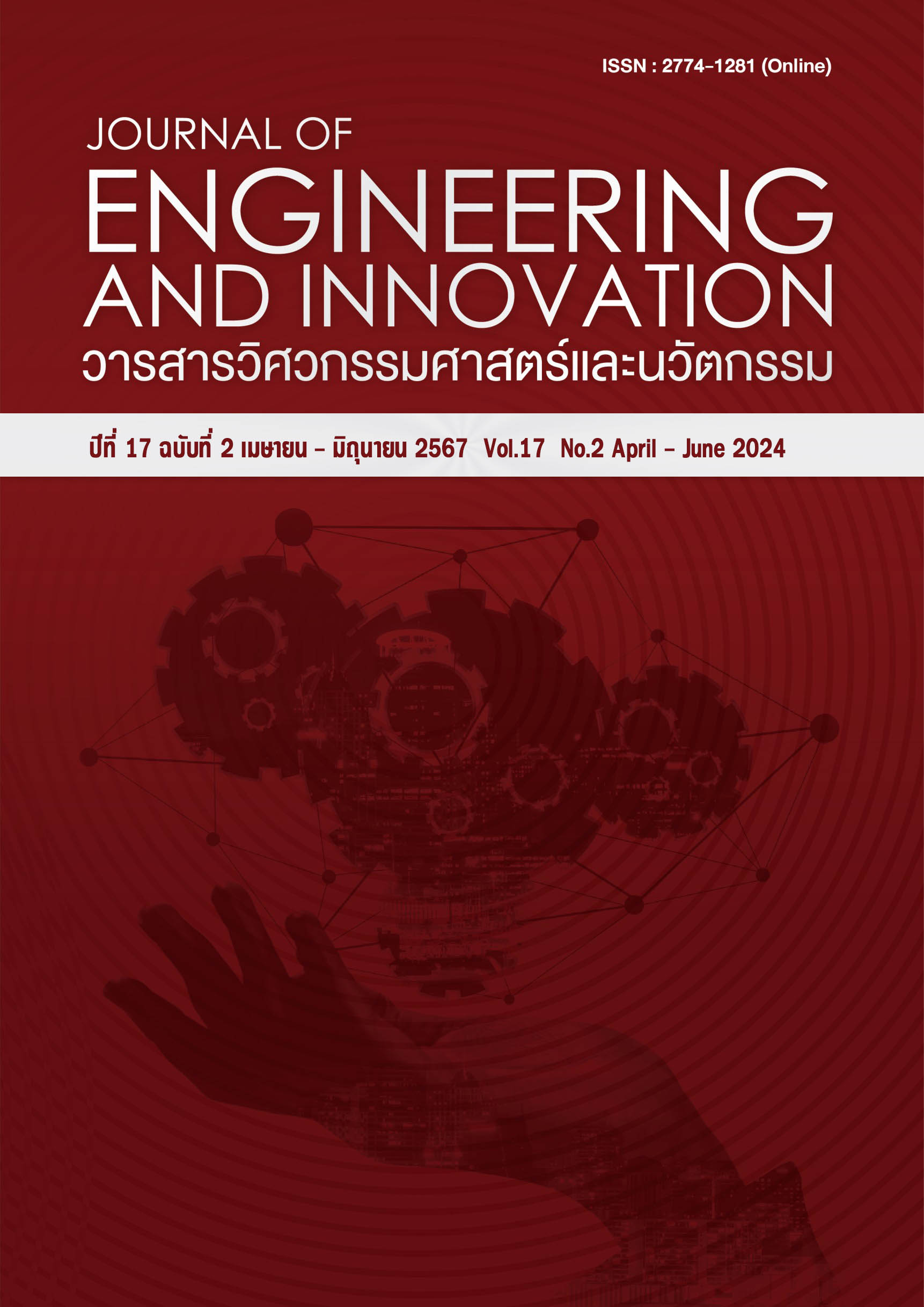A Development of semi-automated production systems for precast concrete factories
Main Article Content
Abstract
Precast concrete component production is an important part of off-site construction technology. The main construction activities are substantially moved to the factory so that the production process and the environment can be managed to achieve higher efficiency. The design of the production process needs to consider all constraints related to the size and shape of the factory site. This research was conducted to determine the location of the factory on the land of a participating private company. The layout and the production process were designed in accordance with the area, which resulted in a factory that was divided into 4 lanes, 9 rows per lane, including the design of new machines to help achieve semi-automatic production with lower investment than the commercialized technology from abroad. As a result, there are 2 production methods, namely Multi-lane Circulatory Pallet (MLCP), and Single-line Circulatory Pallet (SLCP), then the advantages and disadvantages of each method are analyzed. Finally, it is an estimation of the investment and cost-effectiveness analysis of the establishment of this new factory. In five years, the factory is expected to yield a net present value (NPV) of 3.9 million baht, with an attractive internal rate of return (IRR) at 8.4%, and a payback period (PB) of 4 years and 2 months. The results of the new factory design indicate that the precast concrete production business can be initiated at a lower investment cost and suitable for the potential of medium-sized construction companies.
Article Details
References
Kieran S, Timberlake J. Refabricating Architecture. New York: McGraw-Hill, 2004.
National Institute of Building Sciences. Report of the Results of the 2014 Off-Site Construction Industry Survey. Available from: https://www.nibs.org/reports/report-results-2014-site-construction-industry-survey [Accessed 19th February 2023].
Pan W, Sidwell R. Demystifying the Cost Barriers to Offsite Construction in the UK. Construction Management and Economics. 2011; 29(11):1081–1099.
Razkenari M, Fenner A, Shojaei A, Hakim H, Kibert C. Perceptions of Offsite Construction in the United States: An Investigation of Current Practices. Journal of Building Engineering. 2020; 29, https://doi.org/10.1016/j.jobe.2019.101138
Wanaphongtipakorn T. Analysis of marketing mix: 7P of precast condominium in Nakhonratchasima province. Independent Study Report. Suranaree University of Technology; 2022. Thai.
Chotbumlungpong P, Naburana W, Benjaoran V. Factors affecting customer attitude towards purchasing condominiums constructed with precast concrete wall system in Nakhonratchasima province. Proceedings of the 22nd National Graduate Conference; 2022 July 4, Sripatum University.
Warszawski A. Industrialization and Robotics in Building: A Managerial Approach, Harpercollins College Div, 1990.
Han C, Li QN, Wang X, Jiang WS, Li W. Research on rotation capacity of the new precast concrete assemble beam-column joints. Steel and Composites Structures. 2016;22(3):613-625.
India Precast. Available from: indiaprecast.com [Accessed 20th February 2023].
Vollert Group. Available from: vollert.de [Accessed 20th February 2023].
Weckenmann Anlagentechnik GmbH & Co. KG. Available from: weckenmann.com [Accessed 20th February 2023].

